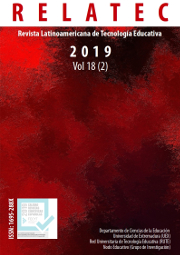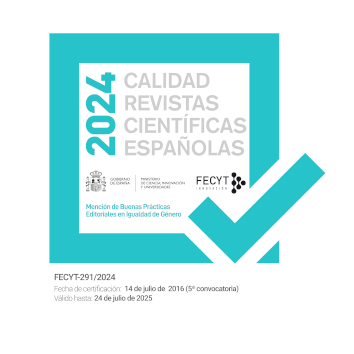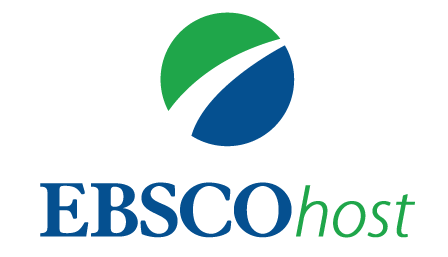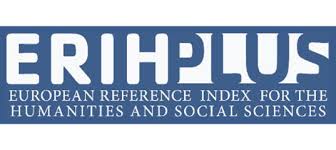Fortaleciendo habilidades de pensamiento computacional en Educación Infantil: Experiencia de aprendizaje mediante interfaces tangible y gráfica
DOI:
https://doi.org/10.17398/1695-288X.18.2.133Palabras clave:
Pensamiento Computacional, Programación, Robótica, Educación InfantilResumen
El desarrollo e integración de la tecnología digital, en el contexto social actual, hace necesario el diseño de propuestas educativas que contribuyan a fortalecer los procesos de enseñanza-aprendizaje a través de recursos y materiales didácticos que aporten dinamismo, flexibilidad e innovación. Un enfoque que está ganando popularidad, en el escenario internacional, consiste en abordar la enseñanza de la tecnología, la programación y el pensamiento computacional desde primeras etapas escolares. En este trabajo se presentan algunos de los resultados alcanzados mediante el desarrollo de una experiencia formativa sobre aprendizaje del pensamiento computacional en educación infantil. El estudio corresponde a un diseño cuasi-experimental con medidas pretest-postest, sin grupo control. La muestra de participantes fue de 44 estudiantes y 2 profesores, de un colegio concertado, en Salamanca, España, durante el periodo 2017-2018. Las actividades consistieron en la resolución de problemas con retos de programación utilizando una interfaz tangible y otra gráfica. Los instrumentos utilizados fueron una rúbrica, cuestionarios y diario de campo. Los resultados generales muestran la existencia de diferencias entre el pretest y el postest, lo que indica que se generó un avance en referencia al aprendizaje del pensamiento computacional mediante la característica explorada. Además, se evidencia una aceptación positiva de las actividades entre estudiantes y profesores. El estudio representa una valoración inicial sobre la adquisición de habilidades de pensamiento computacional y programación en etapas educativas tempranas.
Descargas
Referencias
Basogain-Olabe, X., Olabe-Basogain, M. Á., y Olabe-Basogain, J. C. (2015). Pensamiento Computacional a través de la Programación: Paradigma de Aprendizaje. Red, 46(6), pp.1–33. https://doi.org/10.6018/red/46/6
Bers,M. (2008). Blocks to robots: Learning with technology in the early childhood classroom. New York: Teachers College Press
Bers, M.U. (2010). The TangibleK Robotics program: Applied computational thinking for young children. Early Childhood Research & Practice, 12(2). https://bit.ly/2RZ3B11
Bers, M. U. (2018). Coding, playgrounds and literacy in early childhood education: The development of KIBO robotics and ScratchJr. Presentada IEEE Global Engineering Education Conference, EDUCON, Tenerife, Spain., 2094–2102. Resumen recuperado de https://doi.org/10.1109/EDUCON.2018.8363498
Bers, M. U., Flannery, L., Kazakoff, E. R., y Sullivan, A. (2014). Computational thinking and tinkering: Exploration of an early childhood robotics curriculum. Computers and Education, 72, 145–157. https://doi.org/10.1016/j.compedu.2013.10.020
Bers, M. U., González-González, C., y Armas–Torres, M. B. (2019). Coding as a playground: Promoting positive learning experiences in childhood classrooms. Computers & Education, 138, 130-145. https://doi.org/10.1016/j.compedu.2019.04.013
Brennan, K., y Resnick, M. (2012, April). New frameworks for studying and assessing the development of computational thinking. In Proceedings of the 2012 annual meeting of the American Educational Research Association, Vancouver, Canada (Vol. 1, p. 25).
Bruni, F., y Nisdeo, M. (2017). Educational robots and children’s imagery: A preliminary investigation in the first year of primary school. Research on Education and Media, 9(1), 37-44. https://doi.org/cxnq
Campbell, D., y Stanley, J. (1993). Diseños experimentales y cuasiexperimentales en la investigación social. Buenos Aires: Amorrortu.
Chalmers, C. (2018). International Journal of Child-Computer Interaction Robotics and computational thinking in primary school. International Journal of Child-Computer Interaction, 17, 93–100. https://doi.org/10.1016/j.ijcci.2018.06.005
Chen, G., Shen, J., Barth-Cohen, L., Jiang, S., Huang, X., y Eltoukhy, M.M. (2017). Assessing Elementary students’ computational thinking in everyday reasoning and robotics programming. Computers and Education, 109, 162-175. https://doi.org/10.1016/j.compedu.2017.03.001
Cheng, Y. W., Sun, P. C., y Chen, N. S. (2018). The essential applications of educational robot: Requirement
analysis from the perspectives of experts, researchers and instructors. Computers & education, 126, 399-416. https://doi.org/10.1016/j.compedu.2018.07.020
Chiara, M., Lieto, D., Inguaggiato, E., Castro, E., Cecchi, F., Cioni, G., … y Dario, P. (2017). Educational Robotics intervention on Executive Functions in preschool children: A pilot study. Computers in Human Behavior, 71, 16–23. https://doi.org/10.1016/j.chb.2017.01.018
Cejka, E., Rogers, C., y Portsmore, M. (2006). Kindergarten robotics: using robotics to motivate math,science, and engineering literacy in elementary school. International Journal of Engineering Education, 22(4), 711–722.
Cohen, J. (1988). Statistical power analysis for the behavioral sciences. New York: Academic Press. 2da. Edición.
Elkin, M., Sullivan, A., y Bers, M. U. (2014). Implementing a robotics curriculum in an early childhood Montessori classroom. Journal of Information Technology Education: Innovations in Practice, 13, 153–169.
García-Peñalvo, F. J., Hernández-García, Á., Conde-González, M. Á., Fidalgo-Blanco, Á., S., y Lacleta, M. L., Alier-Forment, M., Llorens-Largo, F., y Iglesias-Pradas, S. (2015). Mirando hacia el futuro: Ecosistemas tecnológicos de aprendizaje basados en servicios. Recuperado de http://rua.ua.es/dspace/handle/10045/51427
García-Peñalvo, F.J., Rees, A.M., Hughes, J., Jormanainen, I., Toivonen, T., y Vermeersch, J. (2016). A survey of resources for introducing coding into schools. Proceedings of the Fourth International Conference on Technological Ecosystems for Enhancing Multiculturality (TEEM’16) (pp.19-26). Salamanca, Spain, November 2-4, 2016. New York: ACM. https://doi.org/10.1145/3012430.3012491
Muñoz-Repiso, A. G. V., & González, Y. A. C. (2019). Robótica para desarrollar el pensamiento computacional en Educación Infantil. Comunicar: Revista científica iberoamericana de comunicación y educación, (59), 63-72. https://doi.org/10.3916/C59-2019-06
González, Y. A. C., & Muñoz-Repiso, A. G. V. (2017, November). Educational robotics for the formation of programming skills and computational thinking in childish. In 2017 International Symposium on Computers in Education (SIIE) (pp. 1-5). IEEE. https://doi.org/10.1109/SIIE.2017.8259652
González, Y. A. C., & Muñoz-Repiso, A. G. V. (2018, October). A robotics-based approach to foster programming skills and computational thinking: Pilot experience in the classroom of early childhood education. In Proceedings of the Sixth International Conference on Technological Ecosystems for Enhancing Multiculturality (pp. 41-45). ACM. https://doi.org/10.1145/3284179.3284188
Hernández Sampieri, R., Fernández-Collado. C., y Baptista-Lucio. P. (2014). Metodología de la investigación. México: McGraw-Hill Education.
Kalelioğlu, F. (2015). A new way of teaching programming skills to K-12 students: Code.org. Computers and Human Behavior, 52, 200-210. https://doi.org/10.1016/j.chb.2015.05.047.
Karampinis, T. (2018). Robotics-based learning interventions and experiences from our implementations in the RobESL framework. International Journal of Smart Education and Urban Society, 9(1), 13-24. https://doi.org/cxnt
Kazakoff, E. R., y Bers, M. U. (2014). Put Your Robot in, Put Your Robot out: Sequencing through Programming Robots in Early Childhood. Journal of Educational Computing Research, 50(4), 553–573. https://doi.org/10.2190/EC.50.4.f
Kucuk, S., y Sisman, B. (2017). Behavioral patterns of elementary students and teachers in one-to-one robotics instruction. Computers & Education, 111, 31-43. http://dx.doi.org/10.1016/j.compedu.2017.04.002
Moreno, I., Muñoz, L., Serracín, J. R., Quintero, J., Pittí Patiño, K. y Quiel, J. (2012). La robótica educativa, una herramienta para la enseñanza-aprendizaje de las ciencias y las tecnologías. Revista Teoría de la Educación: Educación y Cultura en la Sociedad de la Información. 13(2), 74-90. Recuperado de http://campus.usal.es/~revistas_trabajo/index.php/revistatesi/article/view/9000/9245
Olsen, W. (2004). Triangulation in social research: qualitative and quantitative methods can really be mixed. Developments in sociology, Causeway Press Ltd., 20, pp.103-118. Recuperado de https://cutt.ly/8wLEw6P
Papadakis, S., Kalogiannakis, M., y Zaranis, N. (2016). Developing fundamental programming concepts and computational thinking with ScratchJr in preschool education: a case study. International Journal of Mobile Learning and Organization, 10(3), 187. https://doi.org/10.1504/ijmlo.2016.077867
Resnick, M., y Rosenbaum, E. (2013). Designing for tinkerability. In M. Honey & D.E. Kanter (Eds.), Design, make, play: Growing the next generation of STEM innovators (pp.163-181). New York: Routledge.
Scaradozzi, D., Sorbi, L., Pedale, A., Valzano, M., y Vergine, C. (2015). Teaching robotics at the primary school: an innovative approach. Procedia-Social and Behavioral Sciences, 174, 3838-3846. https://doi.org/10.1016/j.sbspro.2015.01.1122
Strawhacker, A., Lee, M., y Bers, M. U. (2018). Teaching tools, teachers’ rules: exploring the impact of teaching styles on young children’s programming knowledge in ScratchJr. International Journal of Technology and Design Education, 28(2), 347–376. https://doi.org/10.1007/s10798-017-9400-9
Strawhacker, A., Sullivan, A., y Bers, M. U. (2013, June). TUI, GUI, HUI: is a bimodal interface truly worth the sum of its parts?. In Proceedings of the 12th International Conference on Interaction Design and Children (pp. 309-312). ACM.
Sullivan, A., y Bers, M. U. (2016). Robotics in the early childhood classroom: learning outcomes from an 8-week robotics curriculum in pre-kindergarten through second grade. International Journal of Technology and Design Education, 26(1), 3–20. https://doi.org/10.1007/s10798-015-9304-5
Sullivan, A. A., Bers, M. U., y Mihm, C. (2017). Imagining, playing, and coding with KIBO: using robotics to foster computational thinking in young children. Siu-cheung KONG.The Education University of Hong Kong, Hong Kong, 110.
Valverde-Berrocoso, J., Fernández-Sánchez, M., y Garrido-Arroyo, M.C. (2015). El pensamiento computacional y las nuevas ecologías del aprendizaje. Red, 46, 1-18. https://doi.org/10.6018/red/46/3
Wing, J.M. (2006). Computational thinking. Communications of the ACM, 49(3), 33-35. https://bit.ly/2ASUK9Q
Wing, J.M. (2008). Computational thinking and thinking about computing. Philosophical Transactions. Series A, Mathematical, Physical, and Engineering Sciences, 366(1881), 3717-3725. https://doi.org/10.1098/rsta.2008.0118
Zapata-Ros, M. (2015). Pensamiento computacional: Una nueva alfabetización digital. Red, 46, 1-47. https://doi.org/10.13140/RG.2.1.3395.8883
Descargas
Publicado
Número
Sección
Licencia
Los autores/as que publiquen en esta revista aceptan las siguientes condiciones:
1. Los autores/as conservan los derechos de autor y ceden a la revista el derecho de la primera publicación, con el trabajo registrado con la licencia Creative Commons Reconocimiento-NoComercial-SinObraDerivada 4.0 International (CC BY-NC-ND), que permite a terceros utilizar lo publicado siempre que mencionen la autoría del trabajo y a la primera publicación en esta revista.
2. Los autores/as pueden realizar otros acuerdos contractuales independientes y adicionales para la distribución no exclusiva de la versión del artículo publicado en esta revista (p. ej., incluirlo en un repositorio institucional o publicarlo en un libro) siempre que indiquen claramente que el trabajo se publicó por primera vez en esta revista.
3. Se permite y recomienda a los autores/as a publicar su trabajo en Internet (por ejemplo en páginas institucionales o personales) antes y durante el proceso de revisión y publicación, ya que puede conducir a intercambios productivos y a una mayor y más rápida difusión del trabajo publicado (vea The Effect of Open Access).









